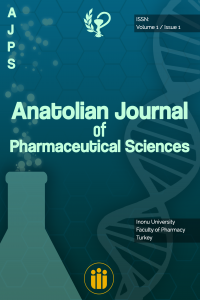DESIGN AND DEVELOPMENT OF A PROTOTYPE OF PROGRAMMABLE TRACHEOSTOMY CANNULA THAT CAN PERFORM OVER-CUFF SUCTION FOR USE IN INTENSIVE CARE PATIENTS WITH DYSPHAGIA
DESIGN AND DEVELOPMENT OF A PROTOTYPE OF PROGRAMMABLE TRACHEOSTOMY CANNULA THAT CAN PERFORM OVER-CUFF SUCTION FOR USE IN INTENSIVE CARE PATIENTS WITH DYSPHAGIA
Tracheostomy, tracheostomy canula dysphagia, aspiration pneumonia,
___
- [1] Wallace S, McGrath BA. Laryngeal complications after tracheal intubation and tracheostomy. BJA Educ. 2021; 21(7): 250–257
- [2] Del Negro MS, Barreto G, Antonelli RQ, Baldasso TA, Meireles LR, Moreira MM, Tincani AJ. Effectiveness of the endotracheal tube cuff on the trachea: physical and mechanical aspects. Rev Bras Cir Cardiovasc. 2014; 29(4): 552–558
- [3] Bone DK, Davis LJ, Zuidema DG, Cameron JL. Aspiration Pneumonia: Prevention of Aspiration in Patients with Tracheostomies. The Annals of Thoracic Surgery. 1974; 18(1):30-37
- [4] Dongho S, Gerald L, Lin RJ. In-hospital mortality for aspiration pneumonia in a tertiary teaching hospital: A retrospective cohort review from 2008 to 2018. Journal of Otolaryngology - Head & Neck Surgery. 2023; 52(23):4425-30
- [5] Smith, J. et al. The Importance of Tracheostomy in Critical Care: A Comprehensive Review. Journal of Intensive Care Medicine. 2019; 45(2): 87-95
- [6] Johnson, A. et al. Complications and Challenges Associated with Cuffed Tracheostomy Cannulas: A Retrospective Study. Critical Care Nursing Journal. 2020; 55(4): 212-225
- [7] Anderson, L. et al. An Automated System for Managing Cuffed Tracheostomy Cannulas in Intensive Care: A Novel Approach. Medical Engineering and Technology Journal. 2022; 70(6): 324-35
- [8] Garcia, E. et al. The Impact of an Automated System on Reducing Aspiration Pneumonia Incidence in Tracheostomy Patients: Preliminary Findings. Healthcare Innovation Research Journal. 2023; 75(2)88-101
- Başlangıç: 2022
- Yayıncı: İnönü Üniversitesi
BIOCHEMISTRY OF THE HUMAN LENS
Esma KARACA, Zeynep ÖZDEMİR, Yaren Nur ZENNİ, Arzu KARAKURT
Kadir BATÇIOĞLU, Mehmet TECELLİOGLU
